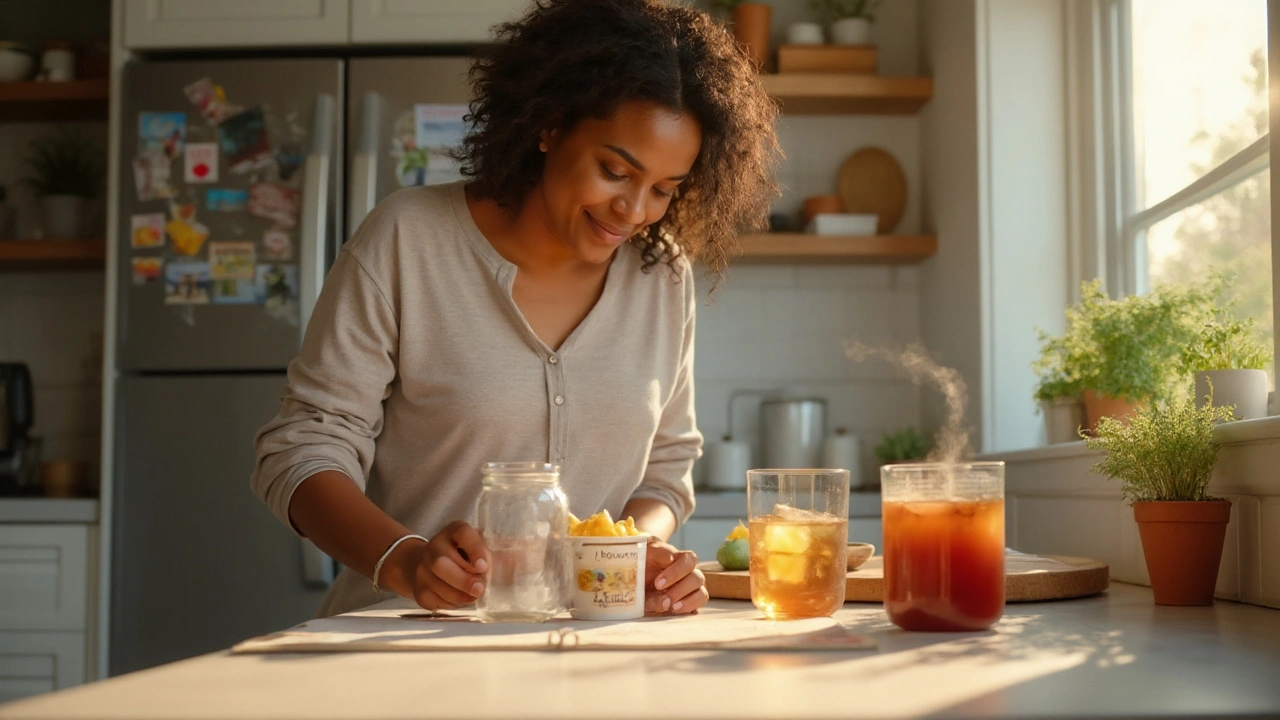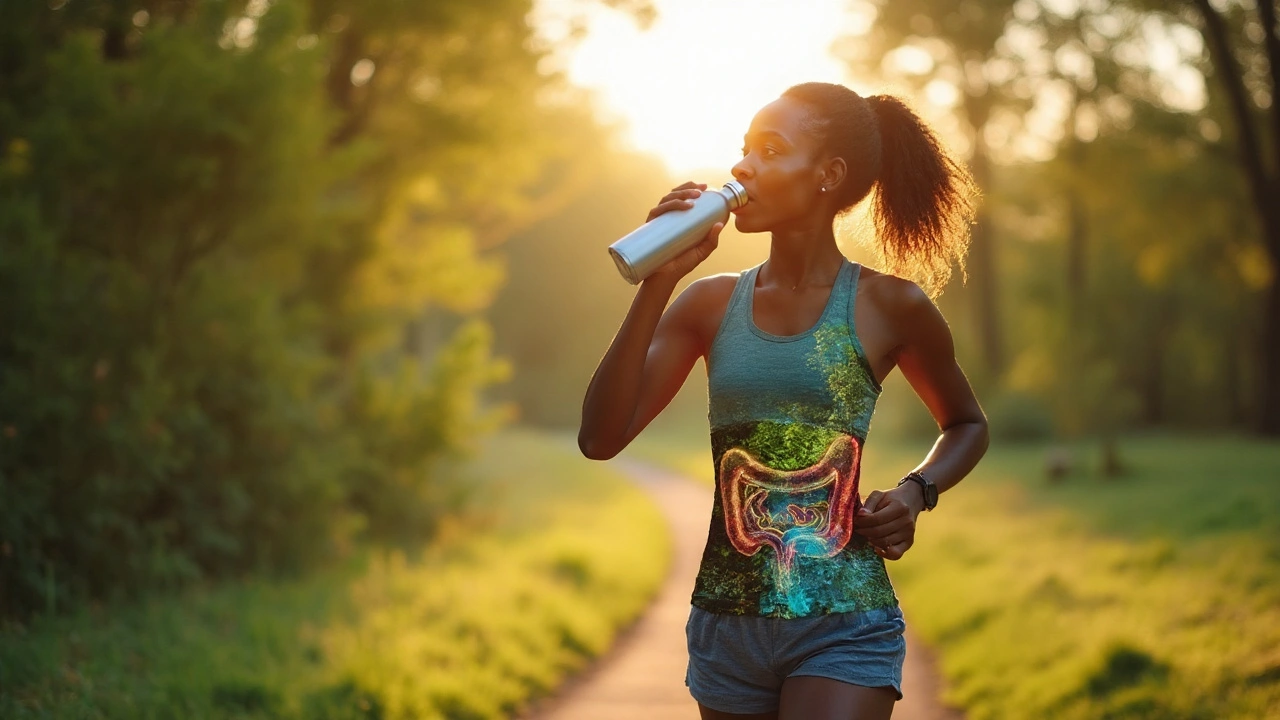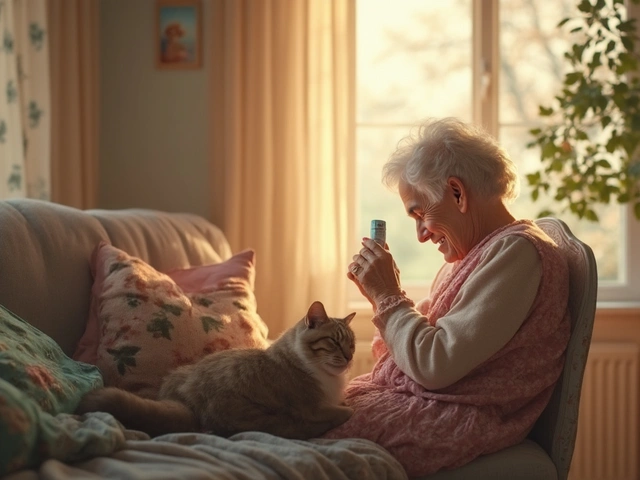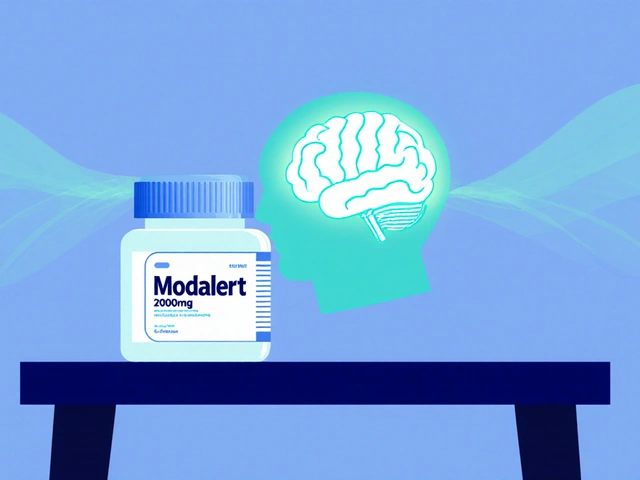
Dry mouth. Dry skin. Dry… everything. When your body runs low on fluid, the first tissues to feel it are the thin, protective linings that keep germs out-your gut lining and the vaginal mucosa. That dryness can mean easier entry for bad bacteria and yeast, slower recovery from tummy bugs, and a higher chance of irritation that spirals into infection. Water won’t replace handwashing, safer sex, or antibiotics when you need them. But smart drinking habits make those natural barriers slick, resilient, and less inviting to trouble.
What you’ll get here: a plain-English rundown of how fluid balance supports your immune defenses, a daily plan you can actually follow, when to use electrolytes, and checklists for fast decisions. Everything reflects current guidance (NHS, WHO, British Dietetic Association, ACOG) and the reality of 2025 life in the UK.
TL;DR: Hydration and infection prevention
- Your gut and vaginal tissues are mucus-lined. Even mild dehydration dries and thins those barriers, raising irritation and infection risk.
- Target 6-8 drinks a day (about 1.6-2.0 L), more with heat, exercise, pregnancy, or breastfeeding. Use electrolytes during diarrhoea or heavy sweating.
- Simple checks: pale straw urine, soft daily stool, steady energy, moist mouth. Dark urine or pebble-like stool means drink and add salts.
- During tummy bugs: oral rehydration solution (ORS) first-line per WHO. Sip 200-250 ml after each loose stool or vomit.
- For vaginal health: stay hydrated, avoid douching, choose cotton underwear, manage blood sugar, and use lube when you need it. Water helps, but it’s one pillar-not a cure-all.
Why water protects your gut and vagina
Think of the gut and vagina as two busy doorways. They rely on mucus and a balanced microbiome to screen visitors. Dehydration messes with both.
In the gut: water keeps the mucus layer thick and slippery, which traps pathogens and helps them pass through. It speeds healthy transit so harmful microbes don’t linger. When you’re dry, stool hardens, transit slows, and the lining gets irritated-tiny cracks are easier for germs to exploit. NHS guidance backs daily fluid targets to support normal bowel movements, and the British Dietetic Association’s stool and urine colour checks make this trackable at home.
In the vagina: moisture helps maintain comfort, supports the natural acidity (pH around 3.8-4.5), and lets Lactobacillus dominate. When fluid is low, discharge can feel tacky and the tissue more fragile. That means micro-abrasions from friction, easier overgrowth of opportunists like Candida, and a higher chance of bacterial vaginosis after disruptions (e.g., after a course of antibiotics). ACOG stresses basics: no douching, gentle washing with water, breathable fabrics, and enough lubrication during sex-hydration supports all of that by keeping tissues supple.
Immunity cares about water too. Even a 1-2% drop in body water can affect physical and cognitive performance; immune cells also rely on a well-hydrated environment to traffic and communicate. During gastroenteritis, the WHO has long shown that prompt oral rehydration reduces complications and keeps circulation steady while your gut heals. That same principle-right fluid, right salts-protects tissue while your body clears the bug.
One more link: blood sugar. High sugar intake and poorly controlled diabetes raise the risk of thrush. Sugary drinks spike glucose and don’t hydrate well. Choose water or sugar-free options for both hydration and yeast control (CDC and ACOG are aligned here).

How to hydrate: a simple daily plan
You don’t need an app to nail this. Use these rules of thumb, then tweak for your life, weather, and hormones.
- Start with morning water. 300-500 ml soon after waking. Your body loses fluid overnight through breathing and urine.
- Build 6-8 drinks into your routine. NHS advice: water, milk, or sugar‑free drinks all count. Tea and coffee count too, but keep caffeine moderate if you get thrush flare‑ups or gut irritation.
- Use the 30-35 ml/kg formula. Quick estimate: your weight in kg × 30-35 ml = your daily baseline. A 65 kg person needs about 2.0-2.3 L in a normal day.
- Match sweat with salts. If your workout is over 60 minutes, or it’s hot, add electrolytes (not just water). Aim for 300-600 ml per hour of activity, containing sodium ~300-600 mg/L. This keeps mucus hydrated and prevents the shaky, headachy, hyponatremia risk of over‑diluting.
- During diarrhoea or vomiting, switch to ORS. Sip 200-250 ml after each episode. WHO and UK Health Security Agency back pre‑mixed sachets. They’re safer than DIY guesses and help your gut absorb fluid.
- Eat your water. Soups, yoghurt, porridge, cucumber, melon, oranges-these add fluid and electrolytes gently when your stomach is touchy.
- Keep sugar low. For vaginal health and gut calm, avoid sugary sodas and fruit juices when you’re prone to thrush or GI bugs. If you love juice, dilute 1:1 with water.
- Check your outputs. Pale straw urine by midday, 4-7 on the Bristol Stool Chart? You’re OK. Dark urine or pellet‑like stools mean you need more fluid and maybe more salt and fibre.
- Periods, pregnancy, menopause-adjust up. Oestrogen shifts affect lubrication. If you notice vaginal dryness around your period or perimenopause, increase fluids, use a gentle, water‑based lube during sex, and talk to your GP about vaginal moisturisers or oestrogen if needed. In pregnancy and breastfeeding, expect higher needs (EFSA sets higher adequate intakes; many women sit around 2.0-2.5 L/day).
- Travel smart. If water safety is uncertain, drink sealed bottled water, avoid ice, and brush teeth with safe water. Carry ORS. Most gut infections abroad are from contaminated food and water; no hydration plan beats prevention.
What to drink most of the time? Plain water or sugar‑free options. Milk is fine if you tolerate it. Sparkling water is okay unless it bloats you. Keep alcohol low; it dehydrates and irritates the gut lining.
Electrolytes 101: sodium gets water into your tissues; glucose helps sodium get absorbed in the small intestine. That’s the genius of ORS. For day‑to‑day, a balanced sports drink or a low‑sugar electrolyte tablet in water after heavy sweat is plenty.
Real-life examples, checklists, and a quick reference table
Week to week in Bristol, weather swings wildly. On a breezy 17°C day, my usual is one bottle on the school run, a glass with lunch, tea mid‑afternoon, a pint with dinner, and a chamomile before bed. On a humid summer day, I add an electrolyte tablet on my evening run around the Downs. It’s not fussy. It’s autopilot.
Here’s how to set your own autopilot.
- Morning: 300-500 ml water before coffee.
- Meals: 300-400 ml with or around each meal. That’s 3 glasses without thinking.
- Activity: 300-600 ml per hour, with electrolytes if you’re drenched.
- Evening: another 300-400 ml, then sip if thirsty. If you wake to pee at night, pull that last glass earlier.
Gut protection checklist:
- Daily fibre 25-30 g (oats, beans, veg) + steady fluids to keep stool soft.
- ORS on hand for you or the kids. Start at the first loose stool.
- Handwashing before eating and after the loo. Clean chopping boards. Hydration supports recovery; hygiene prevents the hit.
- After antibiotics, hydrate, eat fermented foods (live yoghurt, kefir), and give your gut a few weeks to rebalance.
Vaginal health checklist:
- Drink to thirst plus your plan, especially around your period and workouts.
- No douching or scented washes; rinse with water only. Hydrated tissue doesn’t need “deep cleaning.”
- Breathable underwear; change out of sweaty kit quickly to avoid a humid microclimate.
- Use a water‑based or silicone lube during sex if you ever feel friction. Hydration helps, but lube prevents micro‑tears.
- If thrush keeps returning, ask your GP to check your blood sugar and review meds. Hydration supports comfort; sugar control tackles the root.
| Scenario | Target fluid | Electrolytes? | What to watch | Notes |
|---|---|---|---|---|
| Normal day (15-20°C) | 1.6-2.0 L | No (unless you crave salt) | Pale straw urine by midday | Tea/coffee count; go sugar‑free where you can |
| Hot/humid day or heatwave | +0.5-1.0 L on top of baseline | Yes, 1 tablet or 300-600 mg sodium/L | Dizziness, headache = add salts | Use shade, cool showers; check elderly family |
| Workout > 60 min | 300-600 ml/hour of activity | Yes | Bodyweight change >2% = drink more | Don’t chug litres without salt |
| Diarrhoea/vomiting | 200-250 ml ORS after each episode | Yes (ORS) | Thirst, dry mouth, dark urine | Seek help if severe pain, blood, fever, or dehydration signs |
| Pregnancy/breastfeeding | ~2.0-2.5 L/day | Maybe, if sweating | Constipation, dizziness | EFSA notes higher needs; keep stool soft |
| Perimenopause/menopause | Baseline + 1-2 glasses | No (unless active) | Vaginal dryness, hot flushes | Add lube/moisturiser; discuss vaginal oestrogen with GP |
| Travel with unsafe water | 2.0 L bottled/sealed | ORS if ill | Loose stools, cramps | No ice; peel fruit; carry sachets |
Personal note: I used to “forget” to drink on writing days. Every time, by late afternoon, my mouth felt dry and my concentration tanked. I’d get crampy, then a day later I’d be dealing with irritation that made everything feel off. Now my bottle sits by my keyboard, and guess what? Fewer gut grumbles and far less vaginal dryness. Common sense, built into habit.

Mini‑FAQ and what to do if things go wrong
Can drinking water alone prevent yeast infections? No, not by itself. It supports tissue moisture and comfort, which reduces micro‑tears and irritation. But recurrent thrush is usually tied to antibiotics, hormones, or blood sugar. Hydrate, cut sugar, and see your GP if it keeps coming back.
Does coffee dehydrate you? Not in a meaningful way if you’re used to it. Tea and coffee count towards daily fluid. If caffeine upsets your gut or sleep, limit it, but your hydration won’t collapse because of a flat white.
Is sparkling water bad for my vagina? No. If carbonation makes you bloated, switch to still, but bubbles don’t change vaginal pH.
When do I need electrolytes? Heavy sweat, heat, long workouts, diarrhoea, or vomiting. If you’re feeling light‑headed, have a headache, or your urine stays dark despite drinking, add sodium.
DIY ORS recipe? If you can’t get sachets: 1 litre of clean water + 6 level teaspoons sugar + 1/2 level teaspoon salt. Stir well. Pre‑mixed WHO sachets are more precise and safer, especially for kids.
Can I overdo it? Yes. Hyponatremia happens when you drink lots of plain water without salt, diluting your blood. Warning signs: nausea, headache, confusion, swelling in fingers. If that happens during endurance activity, stop drinking plain water and seek medical help.
Does cranberry help? Cranberry is about urinary tract infections, not vaginal infections. Different doorways, different microbes.
How long until hydration helps tissue moisture? Hours, not minutes. Keep it steady across the day. For sex today, use lube today.
Should I douche to “clean” after diarrhoea? No. Douching raises BV risk. Rinse the vulva with water only. Pat dry. Keep underwear breathable. Good wiping technique (front to back) protects the vagina more than any product.
My period makes me dry and sore-will drinking more fix it? It helps comfort, but it might not be enough. Add lube for sex and consider vaginal moisturisers. If dryness persists, talk to your GP; hormonal options can help.
Red flags-call for help: signs of severe dehydration (very dark urine or not peeing, dizziness, confusion), blood in stool, fever with abdominal pain, vaginal bleeding after menopause, discharge with strong odour and pelvic pain, or symptoms lasting more than 48 hours without improvement. NHS 111 can guide you.
Next steps if you’re struggling:
- Set a simple cue: drink 300-500 ml on waking, at each meal, and after every loo visit if your urine is amber.
- Stock ORS sachets at home and in your travel bag. They’re tiny and save a miserable night.
- For athletes: weigh before and after long sessions. Each 1 kg lost ≈ 1 litre to replace, plus salts.
- If you’re getting thrush every month, ask for a blood sugar check and review contraception and antibiotics. Hydration supports healing, but you need the trigger addressed.
- If your gut flares after antibiotics, keep fluids up, add soft fibre, and give it time. If you see blood or lose weight without trying, book a GP appointment.
One final nudge: the easiest “hack” is to make water the default. Put a bottle where you work. Pair each coffee with a glass of water. Keep ORS in your first‑aid box. These tiny habits keep your defenses slippery and strong-exactly where infections hate to live.
And yes, I nudge Edwin about his bottle too. Married life is glamorous like that.
Key sources I trust: NHS (6-8 drinks/day and practical hydration guidance), British Dietetic Association (urine colour charts and stool guidance), WHO (oral rehydration for diarrhoeal illness), UK Health Security Agency (norovirus and dehydration), ACOG (vaginal health basics), and EFSA (adequate intake for total water).
Make one change today: fill a litre bottle and finish it by lunch. Your gut and vagina will thank you.
Oh, and if you only remember one word from this page, make it this: hydration.




Cynthia Springer
August 31, 2025 AT 10:59I never realized how much my dry mouth in the afternoon was linked to vaginal discomfort until I started tracking my water intake. Now I keep a bottle by my desk and sip constantly-no more midnight yeast flare-ups. It’s not magic, but it’s the quietest hack I’ve ever found.
Also, I swear by unsweetened coconut water for post-workout. Not as scientific as ORS, but it works for me.
Rachel Whip
September 1, 2025 AT 01:18Just wanted to add a real-life note: if you’re on birth control or HRT, hydration becomes even more critical. My gyno told me my recurrent BV was partly from low estrogen + not drinking enough. I went from 1L to 2.2L a day, switched to cotton underwear, and stopped using scented wipes. No more antibiotics for 11 months. It’s not glamorous, but it works.
And yes, tea counts. I drink 3 cups a day and still hit my water goal. Don’t let people tell you caffeine is your enemy.
Ezequiel adrian
September 2, 2025 AT 18:35Bro, this is the most chill, non-dramatic health post I’ve seen all year 😌
Water = free magic. I used to think I was ‘too busy’ to drink, then I got a 2L bottle and just chugged it before bed. Now I don’t get those weird cramps after spicy food. Also, my girlfriend says my ‘vagina vibes’ are better. Not sure how she knows but I’m not questioning it 🤷♂️💦
Ali Miller
September 2, 2025 AT 19:05Oh great. Another ‘drink more water’ article from the UK wellness-industrial complex. Let me guess-next you’ll tell us to ‘breathe deeply’ and ‘hug a tree’ to prevent STIs?
Real talk: if you’re getting recurrent vaginal infections, it’s not because you didn’t chug 2L of tap water. It’s because Big Pharma doesn’t profit off hydration. Your NHS is gaslighting you into thinking simple biology is a ‘lifestyle fix.’
Meanwhile, in the real world, people are getting BV from cheap condoms, synthetic fabrics, and unregulated probiotics sold as ‘gut health’ supplements. Stop blaming your water bottle.
And yes, I’ve seen the data. This is a distraction tactic. 😒
JAY OKE
September 2, 2025 AT 19:21My mom used to say, ‘If your pee looks like apple juice, you’re doing it wrong.’ I thought she was being dramatic. Now I’m 34, breastfeeding, and I keep a 1L bottle next to the baby monitor.
Hydration doesn’t fix everything, but it fixes the stuff you don’t even realize is broken-like that weird dryness during sex, or how your stomach feels like concrete after pizza.
Also, sparkling water is fine. I drink it with lime and no guilt. 😎
james thomas
September 3, 2025 AT 12:53Let’s be real-this whole ‘hydration fixes everything’ thing is just a cover-up for the fact that modern life is a garbage fire.
You’re not getting infections because you didn’t drink enough. You’re getting them because you’re stressed, eating processed food, sleeping 5 hours, and your ‘gut health’ is a TikTok trend.
And don’t even get me started on ‘ORS’-who carries those in their purse? The NHS is just trying to sell you sachets so you don’t sue them when your kid gets sick.
Also, why is everyone suddenly obsessed with their vaginal pH? We used to just wipe and move on. Now it’s like we’re all running a microbiome cult.
Drink water if you want. But don’t pretend it’s a cure-all. It’s not. It’s just the only thing you can control when everything else is falling apart. 🤷♂️
Deborah Williams
September 4, 2025 AT 03:18How ironic that a post about bodily autonomy and simple, science-backed self-care gets drowned out by men who think vaginal health is a conspiracy and women who think hydration is a moral obligation.
Let’s not forget: for centuries, women’s discomfort was dismissed as ‘hysteria.’ Now we’re told to ‘just drink more water’-as if our bodies are broken plumbing that needs a refill.
Hydration helps. But so does access to estrogen therapy, non-judgmental gynecologists, and the right to say ‘no’ to douches sold as ‘feminine hygiene.’
Maybe the real revolution isn’t in the water bottle. Maybe it’s in demanding healthcare that doesn’t reduce complex biology to a checklist.
…Also, I drink 3L a day and still get thrush. So yeah. It’s not that simple. 😌